Replacing tires on your rig is an absolute necessity. Regardless of how many miles you have put on them, tires will dry out and become less stable over time and there’s not a lot you can do about it.
It is recommended that you replace your tires no more than 6 years from the manufacturing date that is stamped on the tire. To read the date note the location below:
The manufacturing date is shown circled in red. And can be read as follows:
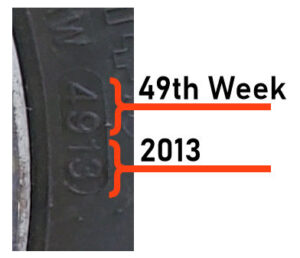
I had purchased this rig after it had been sitting for about five years untouched. Even though it was low miles (25k) I replaced the tires since they were (at the time) 7 years old.
The last thing you want to do is have a blow out on the freeway. It can be dangerous and very damaging to the vehicle. It is always better to err on the side of caution!
Using Leveling Jacks to Replace Tires
This is not a good idea. The jacks are not intended to completely hold the weight of RV so whether you are camping or replacing a flat, it is not recommended doing this solely on the leveling jack. Once you have raised your vehicle, use an appropriate jack stand to support the RV so your jacks are not not holding up the vehicle on their own.
Tools
You should have on board, the tools necessary to pull a tire. In my case (2003 Bounder) it is necessary to carry two different sockets and a breaker bar. These buggers can be on really tight and/or rusted and may take quite an effort to break them loose. Here are the tools necessary (in my case):

The hub cap, sometimes called the “simulator” is only held on by two actual bolts and they are directly opposite of each other. It is sometimes difficult to identify which are the real bolts but they are usually marked slightly different either intentionally or by scratches when they were attached to the rim.
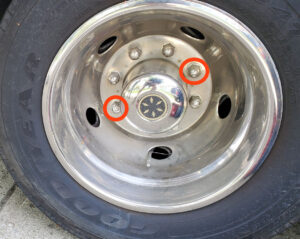
A separate hydraulic jack such as a bottle jack (below) is good to have on hand to help raise the vehicle. The 20 ton jack below will do the trick.
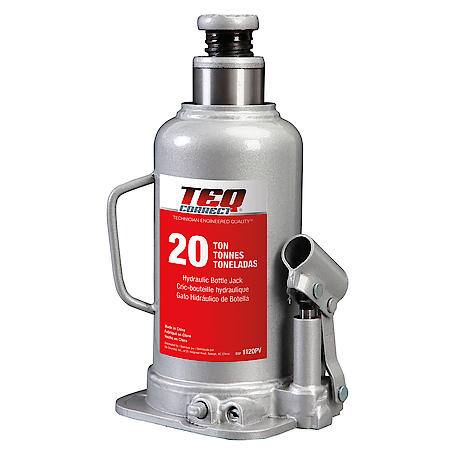
In addition jack stands are a definite requirement for safety. Supporting your vehicle on just your leveling jacks or a hydraulic jack can be dangerous in the event they fail.
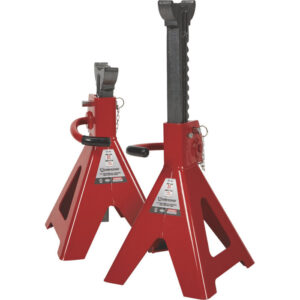
Five Ton Jack Stands
I have seen many photos of bad results from people failing to take care of their tires. Blowouts at 50-70MPH are never predictable and can be avoided to a degree, with proper tire maintenance.

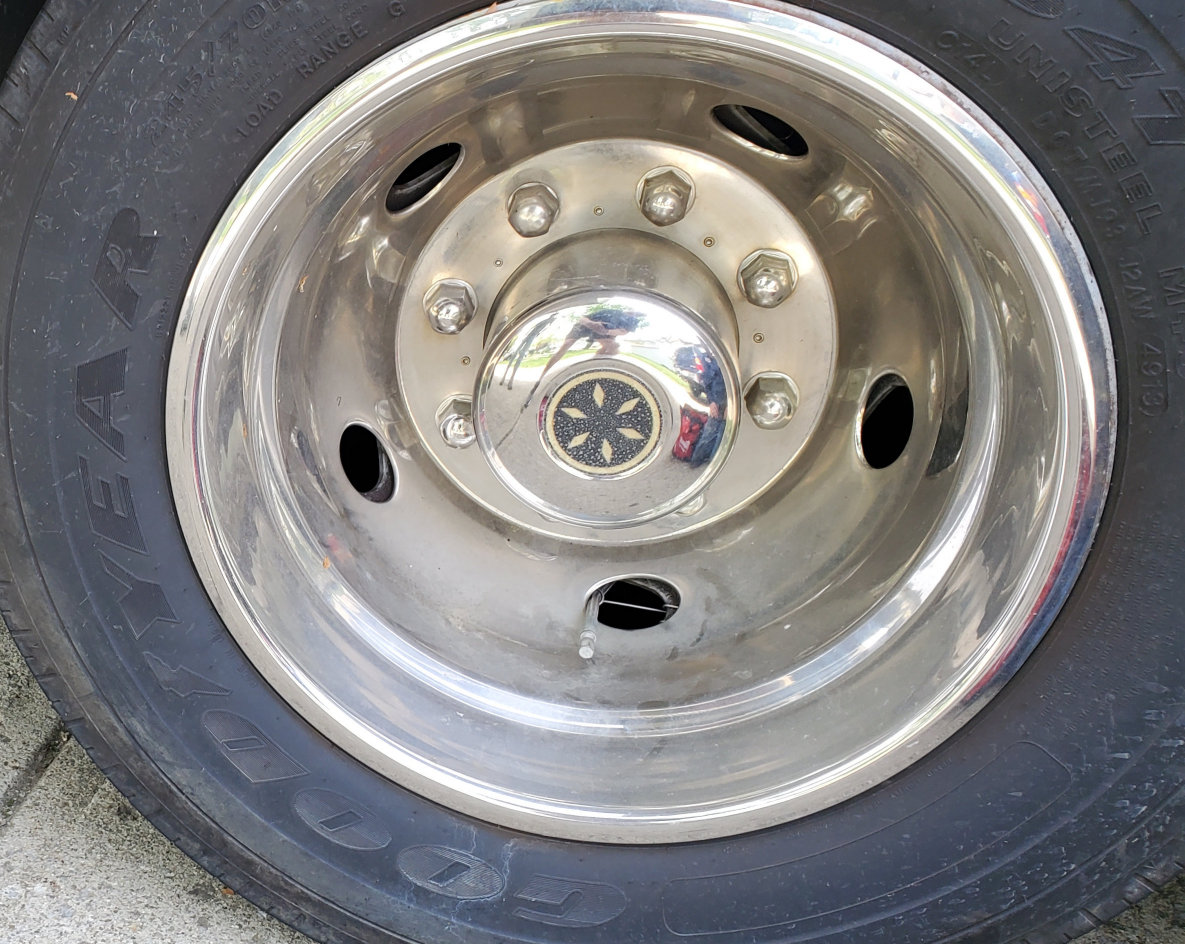
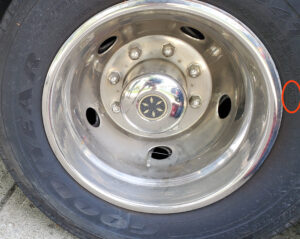
3 comments
A couple considerations:
Age – This is always a hard one because every user is a little different. The majority of my MH use is 5,000 miles a year of high speed highway travel. I do a 9-10 year replacement using a purchase and rotation schedule that places two new tires on the front every three years. The old fronts get moved to the rear outside, the old rear outside get moved to the rear inside, and the old rear inside are replaced with new tires, and go on the front. The two oldest tires (7-10 years) are on the inside of the dullies where they’re exposed to less UV.
Leveler jacks – Raising the vehicle off the ground is common using the leveler jacks when trying to level in a particularly unlevel parking spot. HOWEVER, I never rely on ANY jack to support a vehicle while performing ANY maintenance. I like to ask “What happens if the jack fails?” , and yes, I’ve had jacks fail.
I always place safety stands under the vehicle at the frame or axle, then lower the jack until some of the weight is being supported by the safety stands. This ensures that if a jack does fail, the MH won’t “drop” onto the safety stands, as its already resting on the stands.
Yes, even changing a tire, Ask: “what happens if the jack fails while the tire is off?”
Buy a good set of 5 ton jacks, Use them…
Makes sense, John. I will add text about the jack stands and adjust the article. Thanks!
[…] vacation which required about a five hour drive, I purchased all new tires from a local dealer (see When to Replace Tires). Since the rear tires are “dually” in that they have an outside and inside wheel, […]